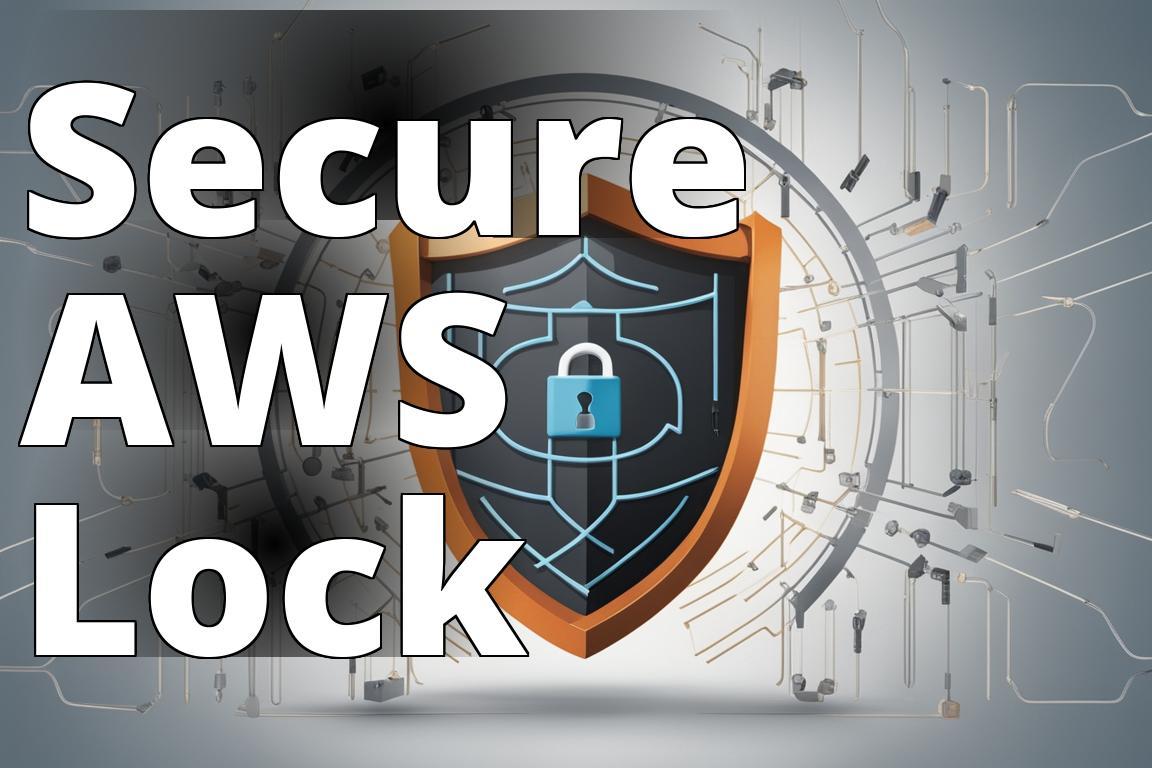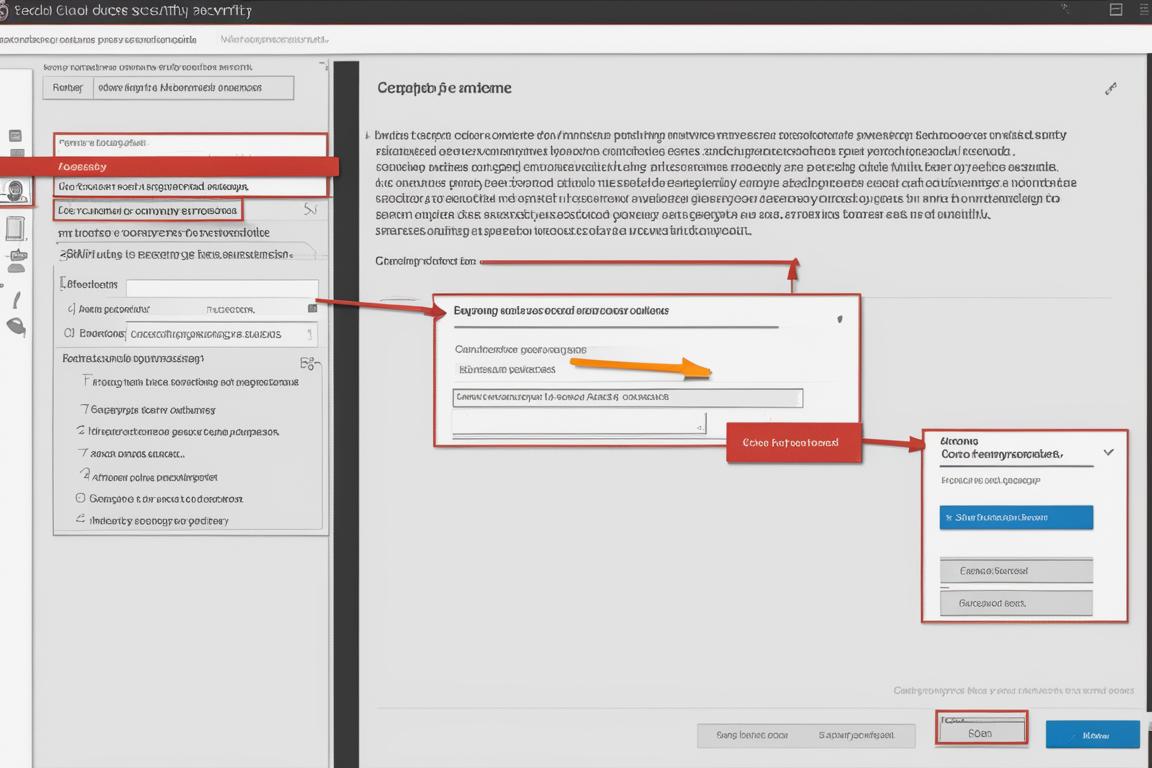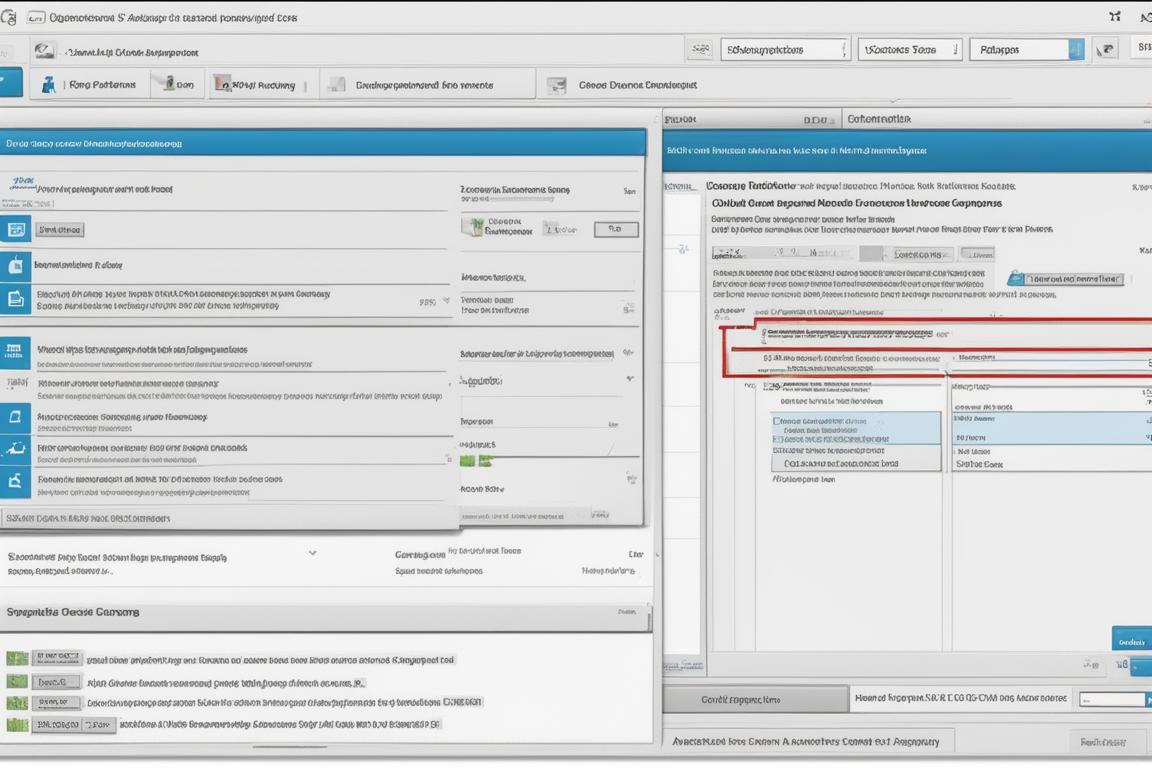Navigating AWS security can be akin to preparing for a high-stakes game where the rules are constantly evolving. The stakes are your data’s integrity, your customer’s trust, and your business’s reputation. With AWS being the powerhouse in the cloud industry, securing your AWS environment isnt just a recommendation; it’s imperative. My journey into AWS security started with a daunting realization of the vastness of its services and the complexity of its security settings. What Ive come to learn, through both triumphs and setbacks, is that certain best practices are non-negotiable. Here’s a deep dive into the top 17 AWS security best practices, reflecting not only industry standards but also lessons learned from the trenches.
Learn about AWS Security Best Practices
- Utilize AWS IAM for resource access control
- Implement MFA for privileged users
- Use AWS CloudTrail for API call monitoring
AWS Security Best Practices
1. Use AWS Identity and Access Management (IAM) to control access to your AWS resources
Identity and Access Management (IAM) isnt just a tool; its the backbone of AWS security. By meticulously managing who can access what in your environment, you safeguard every operation that occurs. I remember setting up my first IAM policies, a process that felt more complex than assembling a piece of IKEA furniture without instructions. Yet, mastering IAM is like unlocking a new level of security prowess.
Insider Tip: Start by defining clear roles and responsibilities within your team and map these directly to the IAM configurations.
2. Apply principle of least privilege
The principle of least privilege (PoLP) is simple in theory but intricate in application. It means giving a user permission to only what they absolutely need to perform their job. When I first applied PoLP, it was a trial by fire, leading to initial disruptions in user operations. However, these teething problems were worth the enhanced security posture we achieved.
Insider Tip: Regularly audit permissions and role assignments to ensure they still align with current job requirements.
3. Enable MFA for privileged users
Multi-factor authentication (MFA) adds an extra layer of defense, making it harder for attackers to gain unauthorized access. Implementing MFA for privileged AWS accounts was a directive I pushed for after a brush with a security incident that could have been mitigated by such a simple measure.
Read more about AWS MFA setup here.
4. Use IAM roles to delegate permissions
Delegation via IAM roles can streamline operations without compromising security, allowing users to perform tasks that require higher privileges temporarily. This best practice is about balancing flexibility with security, a balance that’s crucial yet delicate.
5. Use IAM condition keys for advanced policy management
IAM condition keys provide the granularity needed in complex environments. They allow you to specify conditions under which policies grant or deny permissions. Learning to use condition keys effectively is like fine-tuning an instrument to ensure it plays perfectly in an orchestra.
6. Rotate credentials regularly
Credential rotation is a critical but often overlooked practice. It reduces the risk of old credentials being exploited by attackers. Instituting a routine where credentials are rotated regularly was a game-changer for us, significantly tightening our security.
Real-Life Scenario: Importance of Rotating Credentials Regularly
As a cybersecurity analyst at a medium-sized tech company, I experienced firsthand the importance of regularly rotating credentials on AWS. We had a situation where a former employee’s credentials, which were not promptly deactivated, were compromised by a malicious actor. This led to unauthorized access to sensitive data and potential security breaches within our AWS environment.
In response to this incident, our team implemented a strict policy of rotating credentials for all users every 90 days. This simple yet effective measure significantly reduced the risk of unauthorized access and improved our overall security posture on AWS. Regularly rotating credentials became a standard practice, ensuring that even if credentials were leaked or stolen, they would have a limited window of usefulness for malicious actors.
This real-life scenario highlights the practical impact of following AWS security best practices, such as rotating credentials regularly, in safeguarding your cloud environment against potential threats and unauthorized access.
7. Use AWS Organizations to centrally manage multiple accounts
AWS Organizations is invaluable for managing multiple AWS accounts securely and efficiently. It allows you to apply policies across your entire organization. This capability was a revelation, simplifying our management overhead and improving our security stance.
8. Use AWS CloudTrail to log and monitor all API calls
AWS CloudTrail is your eyes and ears within AWS environments. It logs every API call, providing invaluable insights into user and resource activity. This logging has been instrumental in our forensic investigations following incidents.
9. Use AWS Config to monitor resource configurations and changes
AWS Config is a tool that doesnt just audit; it provides mechanisms to remedy configurations that drift from your established baselines. Learning AWS Config was like learning to predict the weatherit allowed us to prepare for and mitigate potential issues before they became problematic.
10. Use AWS Security Hub to manage security and compliance
Integrating AWS Security Hub was like having a dedicated security analyst tirelessly working to identify and compile security findings from across all connected AWS services. It’s an indispensable tool for maintaining an overview of your security and compliance status.
11. Use AWS Control Tower to set up and govern a secure, multi-account AWS environment
AWS Control Tower automates the setup of a baseline environment across AWS accounts. This automation not only saves time but also ensures that all accounts adhere to your company’s security and compliance guidelines.
12. Use AWS Single Sign-On (SSO) for cloud application access
AWS Single Sign-On simplifies access management for multiple AWS accounts and applications by allowing users to sign in once to access them all. Implementing SSO improved our operational efficiency and tightened our security, a win-win situation.
13. Use AWS Key Management Service (KMS) to encrypt data at rest and in transit
Encryption is non-negotiable in todays digital age. AWS KMS makes encryption and key management scalable and manageable. It was a key component in our strategy to secure sensitive data across our AWS services.
14. Use Amazon Virtual Private Cloud (VPC) to create a private, isolated section of the cloud
Amazon VPC allows you to provision a logically isolated section of AWS where you can launch AWS resources in a virtual network that you define. This isolation is crucial for controlling access and reducing exposure to attacks.
15. Use security groups and network access control lists (ACLs) to control inbound and outbound traffic
Security groups and ACLs are your virtual firewalls within AWS. They help ensure that only the traffic you want can get in or out. Configuring these correctly was a critical step in securing our network perimeters.
16. Monitor your environment with Amazon GuardDuty, a threat detection service
Amazon GuardDuty is like having a guard dog that never sleeps. It continuously monitors for malicious activity and unauthorized behavior. The alerts it provides enable proactive incident response.
17. Use Amazon Macie to discover, classify, and protect sensitive data in Amazon S3
Amazon Macie uses machine learning to automatically discover and classify sensitive data in AWS S3. It has been instrumental in helping us comply with data protection regulations by identifying and securing PII and other sensitive information.
AWS Security Best Practices: Conclusion
AWS security is not a set-it-and-forget-it affair. It’s an ongoing process of refinement and vigilance. Implementing these 17 AWS security best practices doesn’t just enhance your security; it transforms your AWS environment into a fortified digital fortress. My journey through AWS security has been filled with learning curves and victories, each practice providing a new layer of protection and a deeper understanding of what it means to secure a cloud environment effectively. Embrace these practices, and you’ll not only safeguard your assets but also build a culture of security within your organization.
Answers To Common Questions
Who should be concerned about AWS security?
Anyone using Amazon Web Services for cloud computing should prioritize AWS security.
What are common threats to AWS security?
Common threats include data breaches, unauthorized access, and DDoS attacks on AWS systems.
How can I enhance AWS security?
Enhance AWS security by implementing strong access controls, encryption, and regular security audits.
What if I don’t invest in AWS security measures?
Neglecting AWS security measures can lead to data leaks, downtime, and reputational damage for your business.
How does AWS security differ from traditional security?
AWS security focuses on protecting cloud-based infrastructure and data, while traditional security focuses on on-premises systems.
What are the best practices for AWS security?
Best practices include using multi-factor authentication, monitoring logs, regularly updating software, and training employees on security protocols.
With over a decade of experience in cloud security architecture and implementation, Jason is a renowned expert in the field. Holding a Master’s degree in Cybersecurity from a leading university, Jason has worked with top tech companies to design and deploy secure cloud environments. Their extensive knowledge of AWS services and best practices is demonstrated through various successful projects that have strengthened the security posture of organizations. Jason is also a published author of several articles and whitepapers on cloud security, cited by industry professionals worldwide. Additionally, Jason frequently conducts workshops and training sessions on AWS security, empowering IT professionals to safeguard their cloud infrastructure effectively.


